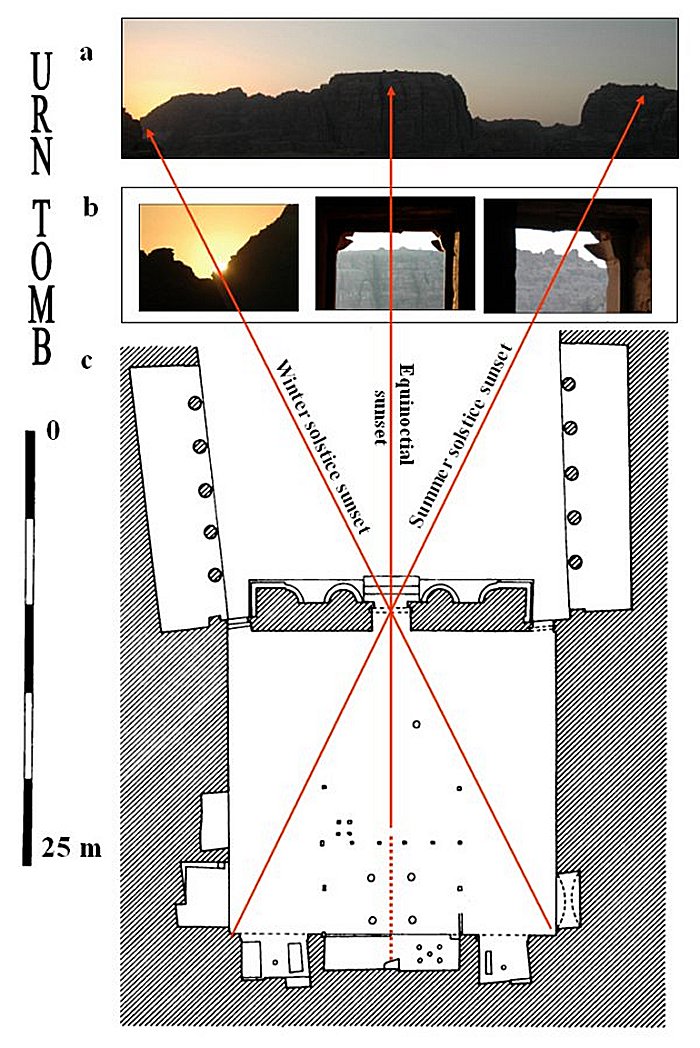Skilled Nabataeans Celestially Aligned Petra’s Wonderful Architecture
AncientPages.com - Evidence for ancient and prehistoric astronomy exists but most of it is indirect and rather hidden.
The Nabataeans watched the sky systematically and accurately and the proof of their astronomical observations can be found in Petra's celestially aligned buildings.
During the winter solstice, the sun is filtered into the Monastery at Petra, Jordan, illuminating the podium of a deity. Just at this moment, the silhouette of the mountain opposite draws the head of a lion, a sacred animal.
These are examples from a study where researchers from Instituto de Astrofisica de Canarias and CSIC (Spain) showed how celestial events influenced the orientation of the great constructions of the Nabataeans.
The movement of the Sun in the skies of Petra - perhaps the most spectacular ancient city - determined the way in which the monuments of this and other Nabataean cities were erected.
Scientists from Instituto de Astrofisica de Canarias (IAC) and CSIC, Spain, and the University of Perugia (Italy) have analyzed the spatial position of the Nabataean's palaces, temples, and tombs.
Their results indicate that those Great buildings were erected bearing in mind the equinoxes, solstices and other astronomical events that determined the Nabataean religion.
The Nabataeans prospered in the first century BC and the first century AD in what is now Jordan and neighboring countries.
The Nabateans are mentioned about the beginning of the Christian era as a race distinguished for their astronomical and general knowledge. It is supposed that they were the ancestors of the ancient Babylonians and Chaldeans.
During the winter solstice the light of the setting sun illuminates the podium of the Monastery at Petra, from where the silhouette of a lion's head is made out on the opposite rocks / Credit: J. A. Belmonte - A. C. González-García
"The Nabataean monuments are marvelous laboratories where landscape features and the events of the sun, moon and other stars interact," Juan Antonio Belmonte, researcher of IAC and coordinator of the study, stressed to SINC.
See also:
Astronomically Aligned Temples And Pyramids Of Ancient World
Unclear Purpose Of Mysterious Rock-Cut City Of Petra - Was It A Fortress Or Sacred City?
"The astronomical orientations were often part of an elaborate plan," he added "and, possibly, a mark of the astral nature of their religion, which showed incredible 'hierophanies' or demonstrations of the sacred on monuments related to cultic times and worship".
A clear example is seen in Ad Deir, the Monastery at Petra. During the winter solstice, the light of the setting sun entering through the gate of the monument illuminates the sacred motab. It is a podium where some stone blocks, which represent divinities such as the god Dushara, are placed.
"The effect is spectacular, and would have only been observable during the few days closest to this solstice," commented Belmonte, who also emphasizes how, just in this moment, another curious phenomenon is produced.
As observed from the motab itself, the setting of the sun recreates the aspect of the head of a lion, the animal of the Nabataean goddess Al Uzza, on the opposite rocks.
Sunset phenomenology in the western horizon (a) related to the solstices and the equinoxes as seen from the Urn tomb enclosure (b). Our data suggest that the site and the internal distribution of the monument were deliberately chosen with an astronomical objective in mind. Adapted from Belmonte et al. (2013a)
Mathematical calculations also show the astronomical plan that the Urn Tomb follows, another famous monument where king Malichus II is thought to be buried. Its main gate is centered with its environment according to the equinox sunset when the day equals the night, and the solar rays during the summer and winter solstices establish the two interior corners of the building.
"This amazing set of three alignments within the plan of the tomb, in combination with significant features in the distant horizon, can hardly be ascribed to chance," underlined Belmonte. "We consider that it is a deliberate attempt to convert the hall of the Urn Tomb into a type of time-keeping device".
When in 446 AD the Christian Bishop Jason converted the Urn Tomb into the Cathedral of Petra, the solsticial markers also served as a reference in determining Christmas Eve (24 December) and St. John the Baptist (24 June), the date on which the monument was consecrated to the new religion.
Research published in 'Nexus Network Journal'
AncientPages.com
More From Ancient Pages
-
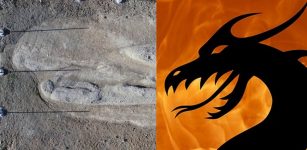 Ancient Dragon Stone That Inspired Legends Discovered In Turkey
Archaeology | Dec 12, 2018
Ancient Dragon Stone That Inspired Legends Discovered In Turkey
Archaeology | Dec 12, 2018 -
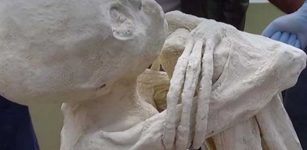 Mystery Of Nazca’s Controversial Three-Fingered Mummies Continues – Attempt To Confiscate The Ancient Remains!
Archaeology | Oct 26, 2019
Mystery Of Nazca’s Controversial Three-Fingered Mummies Continues – Attempt To Confiscate The Ancient Remains!
Archaeology | Oct 26, 2019 -
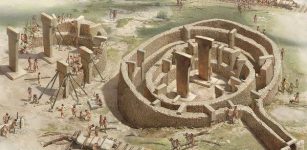 Mysterious Skull Cult At Göbekli Tepe – Ancestor Worship Or Trophies Of Dead Enemies?
Archaeology | Jul 25, 2017
Mysterious Skull Cult At Göbekli Tepe – Ancestor Worship Or Trophies Of Dead Enemies?
Archaeology | Jul 25, 2017 -
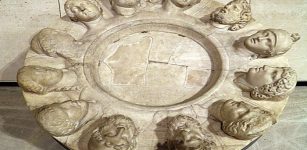 ‘Altar Of Twelve Gods’ At Gabii, Italy Was Once An Important Ancient Place
Civilizations | Apr 1, 2023
‘Altar Of Twelve Gods’ At Gabii, Italy Was Once An Important Ancient Place
Civilizations | Apr 1, 2023 -
 170-Million-Year-Old Sea Monster Identified As The Oldest Mega-Predatory Pliosaur
Evolution | Oct 23, 2023
170-Million-Year-Old Sea Monster Identified As The Oldest Mega-Predatory Pliosaur
Evolution | Oct 23, 2023 -
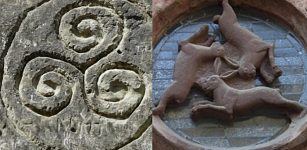 Triskelion – Millennia Old Traditional Symbol Used In Many Cultures Around The World
Ancient Symbols | Dec 13, 2018
Triskelion – Millennia Old Traditional Symbol Used In Many Cultures Around The World
Ancient Symbols | Dec 13, 2018 -
 Evidence Of Rare Roman-Celtic Temple Near Lancaster Castle
Archaeology | Mar 9, 2023
Evidence Of Rare Roman-Celtic Temple Near Lancaster Castle
Archaeology | Mar 9, 2023 -
 UK’s Oldest Human DNA Reveals Two Genetically Distinct Human Groups Migrated To Britain At The End Of Last Ice Age
Archaeology | Oct 24, 2022
UK’s Oldest Human DNA Reveals Two Genetically Distinct Human Groups Migrated To Britain At The End Of Last Ice Age
Archaeology | Oct 24, 2022 -
 Indigenous People Of Ancient Sicily Were Acrive Traders Long Before The Greeks Arrived
Archaeology | Sep 28, 2021
Indigenous People Of Ancient Sicily Were Acrive Traders Long Before The Greeks Arrived
Archaeology | Sep 28, 2021 -
 Height Differences Among Neolithic People Was Caused By Environmental Stress Not Genetics
DNA | Dec 13, 2023
Height Differences Among Neolithic People Was Caused By Environmental Stress Not Genetics
DNA | Dec 13, 2023 -
 Unknown Ancient Settlement Overlapping The Old City Of Nakhon Ratchasima Discovered
Archaeology | Mar 14, 2025
Unknown Ancient Settlement Overlapping The Old City Of Nakhon Ratchasima Discovered
Archaeology | Mar 14, 2025 -
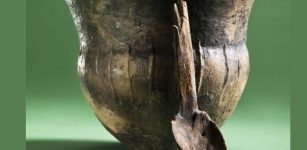 Early Farmers On The Baltic Coast Incorporated Fish Into Their Diets 6,000 Years Ago
Archaeology | Oct 17, 2023
Early Farmers On The Baltic Coast Incorporated Fish Into Their Diets 6,000 Years Ago
Archaeology | Oct 17, 2023 -
 Amazing Restoration Of Ancient Roman Vineyard Buried Underneath The Ash Of Mount Vesuvius For 2,000 Years
Archaeology | Nov 27, 2020
Amazing Restoration Of Ancient Roman Vineyard Buried Underneath The Ash Of Mount Vesuvius For 2,000 Years
Archaeology | Nov 27, 2020 -
 On This Day In History: Reginald Walter Bonham Was Born – On Jan 31, 1906
News | Jan 31, 2017
On This Day In History: Reginald Walter Bonham Was Born – On Jan 31, 1906
News | Jan 31, 2017 -
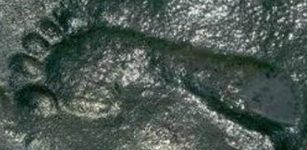 Mystery Of The 290-Million-Year-Old Zapata Footprint In New Mexico
Featured Stories | Sep 23, 2020
Mystery Of The 290-Million-Year-Old Zapata Footprint In New Mexico
Featured Stories | Sep 23, 2020 -
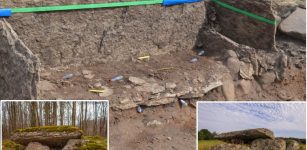 Mystery Of The Unique Tiarp Dolmen – One Of Oldest The Stone Burial Chambers In Scandinavia
Archaeology | Jan 30, 2024
Mystery Of The Unique Tiarp Dolmen – One Of Oldest The Stone Burial Chambers In Scandinavia
Archaeology | Jan 30, 2024 -
 When Did Humans First Start To Speak?
Featured Stories | Dec 12, 2022
When Did Humans First Start To Speak?
Featured Stories | Dec 12, 2022 -
 Mysterious Ancient Mass Grave With Roman Skeletons Baffles Archaeologists
Archaeology | Sep 25, 2017
Mysterious Ancient Mass Grave With Roman Skeletons Baffles Archaeologists
Archaeology | Sep 25, 2017 -
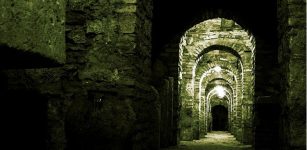 Strange Case Of 17th-Century Child Mummy Hidden From The Sun – What Does Virtual Autopsy Reveal?
Archaeology | Oct 26, 2022
Strange Case Of 17th-Century Child Mummy Hidden From The Sun – What Does Virtual Autopsy Reveal?
Archaeology | Oct 26, 2022 -
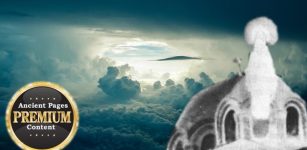 Unexplained Cases Of Holographic Projections In Ancient And Modern Times
Ancient Mysteries | Sep 14, 2018
Unexplained Cases Of Holographic Projections In Ancient And Modern Times
Ancient Mysteries | Sep 14, 2018



